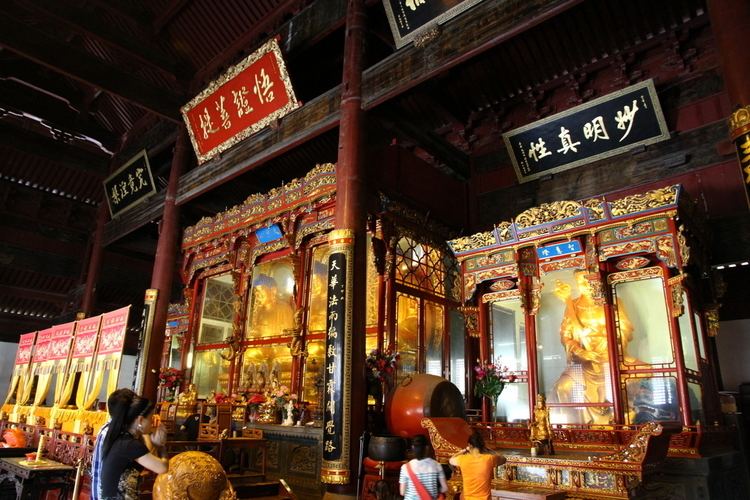Phone +86 580 669 0317 | ||
 | ||
Similar Puji Temple, Mount Putuo, Pantuoshi, King Asoka Temple, Tiantong Temple | ||
Fayu temple part 1 3
Fayu Temple (simplified Chinese: 法雨禅寺; traditional Chinese: 法雨禪寺; pinyin: Fǎyǔ chánsì), also called Stone Temple, is one of three major temples in Mount Putuo, Zhejiang province, China. Its grand hall was rebuilt in 1699 during the Qing dynasty.
Contents
Fayu temple part 3 3
History
Fayu Temple is the second largest temple in Mount Putuo, and a national key Buddhist temple designated by the State Council. In 1580 during the Ming dynasty, a monk of Macheng, named Dazhi (Zhenrong), came from west Sichuan to Mount Putuo for training. He was attracted by the local scenery and built a small sanctuary named "Ocean Tide", meaning "Buddhist Ocean Guanyin". In 1594, the governor Wu Anguo renamed it "Ocean Tide Temple". It was destroyed by fire in 1598. In 1605, it was renovated and expanded. In the following year, the central government granted a plaque "National Defense Ocean Pacifying Temple", as well as an inscription called "Dragon Treasure". It suffered through several wars and fire. In 1687 during the Qing dynasty, the temple was refurbished and expanded again. In 1699, the Kangxi Emperor granted a plaque "Heavenly Flowers Dharma Rain". Thus, it changed to "Dharma Rain Temple", or "Fayu Temple". In 1731, the Yongzheng Emperor ordered a large-scale renovation project. Thereafter, it became a famous temple in southeast China.
Area
The temple has a land area of 33,000 m2. It comprises 294 halls and rooms, with a building area of 9,300 m2. Along the trend of the mountain from lower to higher are Heavenly Kings Hall, Jade Buddhist Hall, Nine-Dragon Guanyin Hall, Emperor Tablet Hall, Great Grand Hall, and Fangzhang Hall.
Front door
The front door of the temple is not located along the axial line, but on the southeast corner. It is a double-eaved square pavilion, different from average front doors of Buddhist temple. The front plaque reads "Heavenly Flowers Colorful Rain", written in gold on blue ground. Inside the door, to the west is the shadowy wall. It was originally a three-dragon wall carved on bricks, with Buddhist words meaning "unbelievable power". Unfortunately, the wall was pulled down during the Cultural Revolution. In 1987, on the site erected a Nine-Dragon Wall. Built of pale stones, it is 12m wide, 9m high and 1m thick.
